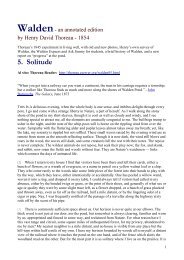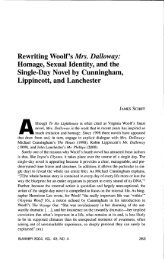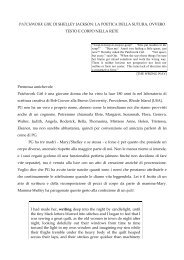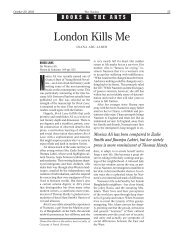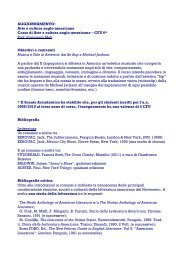Exciting Tales of Exotic Dark India - Paola Carbone
Exciting Tales of Exotic Dark India - Paola Carbone
Exciting Tales of Exotic Dark India - Paola Carbone
You also want an ePaper? Increase the reach of your titles
YUMPU automatically turns print PDFs into web optimized ePapers that Google loves.
<strong>Exciting</strong> <strong>Tales</strong> <strong>of</strong> <strong>Exotic</strong> <strong>Dark</strong> <strong>India</strong> 281<br />
Can I cream <strong>of</strong>f awards from your melting-pot phase<br />
Do you medal yourselves when you meddle with my type[]<br />
Daljit Nagra 15<br />
Artists, Rushdie suggests, are in the business <strong>of</strong> cultural mapping. In<br />
an interview, he asserts that his Booker-prize winning novel Midnight’s<br />
Children attempted to answer a cartographical imperative – to chart a<br />
new aesthetic map <strong>of</strong> his birth country because “<strong>India</strong> may be an ancient<br />
civilization but it’s also a new country”. He reasserts that “[o]ne <strong>of</strong> the<br />
things you have to do with new countries is to draw maps <strong>of</strong> them”;<br />
after providing the reader with these imaginative maps, writers can then<br />
“put [themselves] on the map”. 16 The White Tiger, published twentyseven<br />
years after Midnight’s Children, sets out to chart the underside <strong>of</strong><br />
<strong>India</strong>’s new-found economic prowess by the hand <strong>of</strong> a protagonist who<br />
stands for “tomorrow” (p.6). Even though Adiga’s mapping <strong>of</strong> a <strong>Dark</strong><br />
<strong>India</strong> might be seen as an opportunistic depiction <strong>of</strong> <strong>India</strong>n destitution,<br />
it represents to some critics the future <strong>of</strong> a nation coming to terms with<br />
images <strong>of</strong> endemic poverty and underdevelopment, and <strong>of</strong> a literature<br />
in search <strong>of</strong> a new creative path away from what they perceive as wornout<br />
Rushdiesque motifs.<br />
In a rave review <strong>of</strong> The White Tiger, the British magazine The Economist<br />
lionizes Adiga as “the Charles Dickens <strong>of</strong> the call-centre generation”. 17<br />
Following a familiar practice <strong>of</strong> comparing <strong>India</strong>n novelists to Dickens<br />
(a critical tradition that seems to descend from comments on Mulk<br />
Raj Anand, a writer said to be “<strong>India</strong>’s Charles Dickens” 18 ), Charlotte<br />
Higgins describes Adiga’s portrayal <strong>of</strong> <strong>India</strong>’s glaring social contrasts as<br />
“almost Dickensian”, basing her comparison on the fact that, in the novel,<br />
“the unpleasant reality <strong>of</strong> contemporary <strong>India</strong>n society is revealed via<br />
mordant sketches <strong>of</strong> characters, from millionaires in their air-conditioned<br />
tower blocks to the unfortunates who are trapped in poverty and who<br />
live literally below them, catering to their every whim”. 19 While these<br />
reporters liken Dickens to Adiga, Rushdie regards the Victorian novelist<br />
as “quintessentially <strong>India</strong>n” and draws a parallel between Dickensian<br />
London and “the pullulating cities <strong>of</strong> <strong>India</strong>”, which could include the<br />
Delhi depicted in Adiga’s novel:<br />
Dickensian London, that stenchy, rotting city full <strong>of</strong> sly, conniving shysters,<br />
that city in which goodness was under constant assault by duplicity, malice<br />
and greed, seemed to me to hold up the mirror to the pullulating cities <strong>of</strong><br />
<strong>India</strong>, with their preening élites living the high life in gleaming skyscrapers<br />
while the great majority <strong>of</strong> their compatriots battled to survive in the<br />
hurly-burly <strong>of</strong> the streets below. 20<br />
In The Independent, a reviewer hails The White Tiger as “an <strong>India</strong>n<br />
novel that explodes the clichés – ornamental prose, the scent <strong>of</strong> saffron<br />
Downloaded from jcl.sagepub.com at Senate House Library, University <strong>of</strong> London on November 29, 2010



